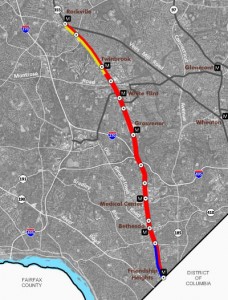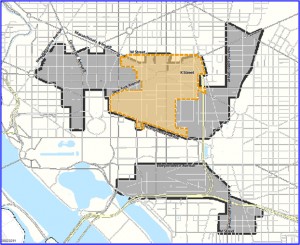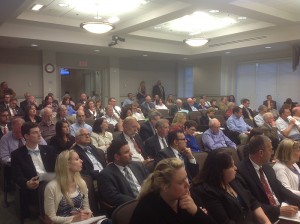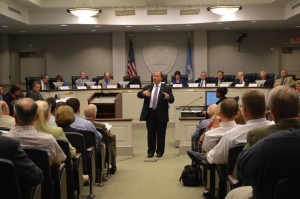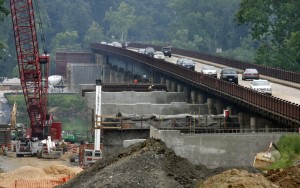Bus Rapid Transit supporters are split on the Master Plan the county’s Planning Department will likely send to the County Council next week on the new transportation system.
Some are still worried language inserted into the plan that would require “a thorough traffic analysis” before any BRT system is implemented severely waters down the plan and contradicts the basic point of making roads move more people instead of more cars.
Meanwhile, the Coalition For Smarter Growth, which is lobbying for a BRT network that would include a controversial transitway on Rockville Pike/MD 355, praised the Planning Board for taking “a major step forward.”
“This plan is one of the most extensive and progressive transportation plans of any suburban community in our region, and is in keeping with Montgomery County’s record of innovation in land use transportation and housing policy,” CSG Executive Director Stewart Schwartz said in a statement.
The Action Committee for Transit wrote a letter to the Planning Board before a worksession on the plan last Thursday urging it to reconsider the “thorough traffic analysis” language.
ACT is concerned a traffic study from county transportation planners at time of facility planning would make it more difficult to dedicate existing lanes to the buses in the BRT network, thus reducing the amount of all-traffic lanes.
At the Thursday worksession, the Planning Board amended the language by saying the thorough traffic analysis “should be performed” instead of “must be performed,” and only “where lane repurposing is recommended.”
Planning Board Chair Francoise Carrier advocated a plan that would ease concerns from drivers worried about how fewer lanes would affect their commutes. On Thursday, Carrier said the Board should consider how the repurposing lanes debate would play out before the County Council, which is expected to take up Bus Rapid Transit in September.
“There is a tension between sending up a plan that’s easier to adopt or sending up the plan thats bolder,” Carrier said.
Planning Commissioner Casey Anderson made it clear throughout the process he’s in favor of a bolder option that would include repurposed lanes where needed. Planning staff has said a lane each way on MD 355 would need to be repurposed through downtown Bethesda and Chevy Chase because there is no room to build an additional lane.
There has already been much opposition to the idea of repurposing lanes from neighborhood groups in Silver Spring and Chevy Chase and residents in Bethesda.
“It’s almost like you’re a dog that’s been beat too much and you’re afraid you’re going to get hit again when you start talking about, ‘Oh, don’t worry. We’re not going to do [lane repurposing] everywhere,’ before you even get started,” Anderson said.
Kelly Blynn, an organizer for the Coalition for Smarter Growth, said while the plan is a break from thinking that often shortchanged transit in favor of single-occupancy vehicles, the group is still concerned about new language from the State Highway Administration.
“However, Blynn expressed concern that other new language in the plan, pressed by the State Highway Administration, would place too high of a standard on moving cars through without considering a more proper standard of what approach would move the most people,” read the group’s press release.
Photo courtesy of Montgomery County Planning Department.

